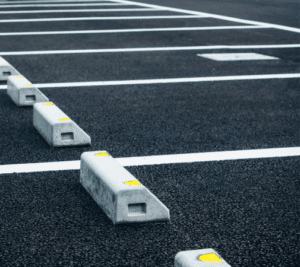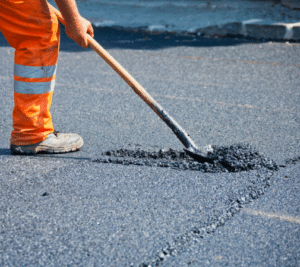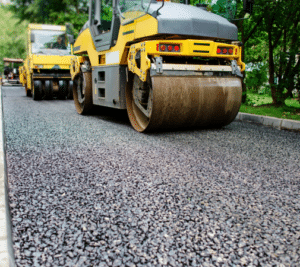Have you ever heard of dry pouring concrete? It’s a method of mixing and pouring concrete that doesn’t involve water until the very end. This may sound strange, but it’s a popular technique professionals and DIY enthusiasts use.
Dry pouring concrete is an excellent option for those who want to save time and reduce the mess of traditional wet mixing methods. Plus, it can result in a stronger and more durable final product.
This article will explore the ins and outs of dry pouring concrete, including the benefits, materials needed, and step-by-step instructions. Whether you’re a seasoned contractor or a first-time DIYer, you’ll learn everything you need to know to pour your dry concrete successfully.
What Is Dry Pouring Concrete?
Dry pouring concrete is a method of constructing a concrete structure where dry ingredients, such as cement, sand, and aggregate, are mixed, and then water is added on site. This allows for greater control over the water content and consistency of the mixture, resulting in a more robust and durable final product.
Pros Of Dry Pouring Concrete
1. Reduced mess: Dry pouring concrete eliminates the need for wet mixing, resulting in less mess and debris to clean up afterward.
2. Faster setup: You can prepare dry concrete on site in minutes, saving you time and hassle.
3. Greater control: With dry pouring, you have greater control over the consistency of your mixture, allowing you to create a stronger final product.
4. Cost savings: Dry pouring concrete requires fewer materials, saving you money in the long run.
Cons Of Drying Pouring Concrete
1. More difficult to mix: Without water, dry ingredients are harder to mix together and require more effort on the part of the worker.
2. Shorter lifespan: Dry poured concrete does not last as long as wet mixed concrete due to its lack of water content.
3. Requires special tools: You may need to invest in specialized tools for dry-pouring concrete, such as a concrete mixer and a compactor.
How To Dry Pour Concrete
Materials Needed
Dry pouring concrete requires a few special materials to be successful. These include cement, sand, aggregate, and water. You’ll also need an appropriate tool for mixing ingredients, such as a wheelbarrow or concrete mixer. Additionally, a compactor should be used after the wet mixture has been poured to ensure a strong bond between particles and avoid air pockets.
Dry Pour Process
- Mixing the dry ingredients: The dry ingredients, including cement, aggregates (such as sand and gravel), and any other additives or admixtures, are mixed thoroughly in a predetermined ratio. This can be done at a batching plant or a specialized mixing facility.
- Transporting the dry mix: The dry blend is transported to the residential or commercial construction site in bags or bulk, such as in a cement truck or a silo.
- Pouring the dry mix: Once the dry mix arrives at the site, it is poured into the designated area where the concrete is needed. This can be a formwork for a slab, a mold for a precast element, or any other appropriate structure.
- Adding water: After the dry mix is in place, water is added to activate the cement and initiate the chemical reaction that leads to hydration. The water is typically added using a hose or sprayer and distributed evenly throughout the dry mix.
- Mixing and compacting: The dry blend is mixed and compressed using various techniques once the water is added. This can involve manual mixing with shovels or mechanical mixing with concrete mixers or pumps. The goal is to achieve a homogenous mixture with proper workability.
- Finishing and curing: After the concrete is adequately mixed, it is finished and cured according to standard practices. This can involve smoothing the surface, applying desired textures, and providing appropriate curing methods to ensure proper strength development.
Steps To Take After Dry Pouring Concrete
After dry pouring concrete, several steps must be taken to ensure that the concrete sets correctly and that the finished surface is solid and durable. First, the concrete should dry and cure for at least 24-48 hours before any weight is placed on it. During this time, it is important to keep the surface moist to prevent cracking and ensure proper curing.
Once the concrete has cured, any excess material should be removed, and the surface should be smoothed and leveled using a trowel or float. Finally, a sealer or protective coating can be applied to help prevent damage and extend the life of the concrete. Following these steps ensures that your dry poured concrete surface will be strong, durable, and long-lasting.
Which Is Better? Wet Pour Or Dry Pour Concrete?
The answer to whether wet or dry pouring concrete is better depends on the specific project and its requirements. Wet pouring involves mixing the concrete with water before pouring it into the desired shape, while dry pouring involves pouring dry concrete mix into the shape and then adding water. Wet pouring is often preferred for larger projects as it allows for more control over the consistency of the concrete and can result in a smoother finish. Dry pouring is often used for smaller projects or when access to water is limited. Ultimately, the decision on which method to use should be based on the specific needs and requirements of the project.
In conclusion, dry pouring concrete is a game-changer for any DIYer or professional looking to save time and money on their projects. With its ease of use and versatility, it’s no wonder why more and more people are choosing this method. So next time you need to pour some concrete, try dry pouring and see the difference for yourself!
If you have any questions about what concrete method would be best for your project or are in need of professional concrete contractor services, contact us at Saguaro Asphalt! Our team of experts is ready to help with any project, big or small!



